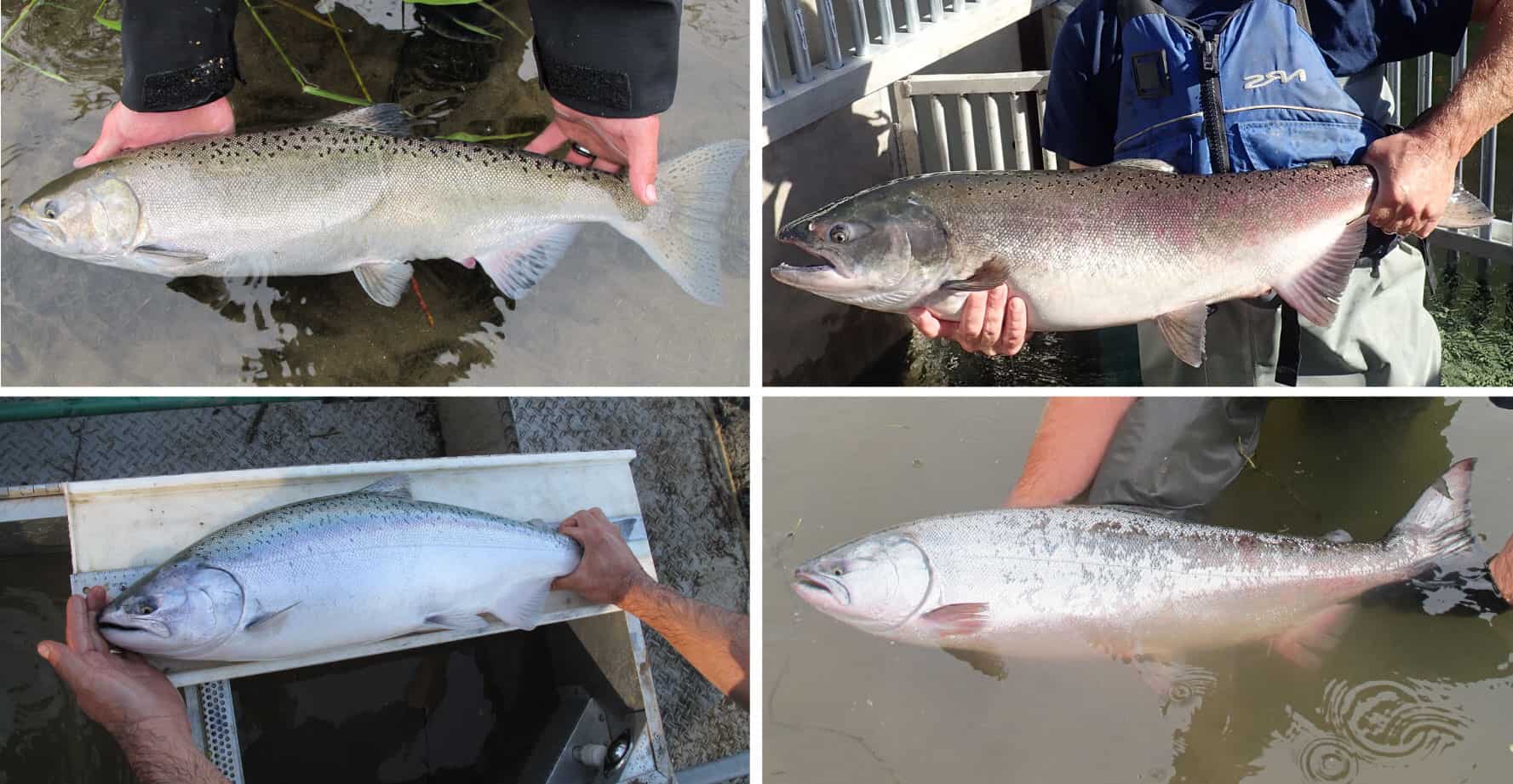

Photo: Adult Chinook belonging to different runs.
Perhaps the most essential skill for any field biologist is the ability to distinguish between the different species they are studying. Of course, this is often easier said than done, and things can get even more granular when distinguishing between groups within species, such as the four different runs of Chinook salmon (Oncorhynchus tshawytscha) in the rivers of California’s Central Valley. Two of these – winter- and spring-run – are listed under the Endangered Species Act (ESA) as endangered and threatened, respectively, but even the most seasoned biologist would not be able to visually distinguish them from one another, nor from unlisted fall- and late-fall-run fish. It’s in cases like this when the gold standard of species ID – genetics – becomes essential. However, digging into the DNA of fish means sending samples to the lab and waiting days for results. Or at least that was the way it worked until the advent of CRISPR, which may offer a means of placing the power of a molecular laboratory in the pocket of a field biologist. Recently, a team of researchers led by the California Department of Water Resources published the results of their attempt to use this remarkable technology to identify Chinook salmon runs in the field (Baerwald et al. 2023), and their results paint a promising picture for the future of field-based molecular identification methods.


CRISPR stands for Clustered Regularly Interspace Short Palindromic Repeats and is actually a defense mechanism used by bacteria to detect and destroy invading viruses. This mechanism can be hijacked by enterprising scientists for a variety of purposes, including gene editing, and the detection of pathogens. In essence, CRISPR can be used like the “Find” function in Microsoft Word, but instead of locating a specific word, it finds specific sequences of DNA. Once it finds its target, it can then function like the “Cut” command, cleaving out the sequence. In particular, Cas13 – a type of protein coded for in the CRISPR DNA sequences – is useful for detecting, binding to, and cutting target sequences. This makes them very useful for developing tests to identify sequences of interest, and these tests can be sensitive enough to detect a single molecule of RNA or DNA. This mechanism was developed into a detection platform known as SHERLOCK, which stands for Specific High-sensitivity Enzymatic Reporter UnLOCKing. Briefly, this approach works by having the Cas13 proteins target the desired sequence and then cut it along with any single-stranded RNA molecules that are added to the reaction. By adding RNA molecules attached to a fluorescent marker, the reaction produces a visible signal when the target sequence is detected.
Though originally created for diagnostics in medical clinics, SHERLOCK has begun to be applied to ecological studies, including the identification of ESA-listed fish species such as the threatened delta smelt (Hypomesus transpacificus). Taking things a step further, the researchers behind this recent study sought to apply it to distinguish between the different runs of Chinook salmon. Searching through numerous sequences failed to identify any single genetic difference that would be diagnostic for all four runs, so the researchers instead created two assays to be run in sequence. The first was designed to distinguish between the early (winter- and spring-run) and late (fall- and late-fall-run) migrating fish based on a genetic region associated with those patterns. The second was focused on distinguishing between the winter- and spring-runs, both of which are listed under the ESA and therefore of high priority for managers to identify. They tested these SHERLOCK assays in the laboratory and compared outputs to those provided by a commonly used but more time-consuming practice called quantitative polymerase chain reaction (qPCR). They also tested the new SHERLOCK assays in the field using mucus swabbed from […]
Full article: fishbio.com
Clean water is essential for life, yet millions of Americans unknowingly consume contaminants through their…
Human brains contain higher concentrations of microplastics than other organs, according to a new study, and the…
From the Office of the Governor: In anticipation of a multi-day, significant atmospheric river in Northern California,…
From Governor Newsom: Scientists, water managers, state leaders, and experts throughout the state are calling…
Photo: A harmful algal bloom in Milford Lake, Kansas, made the water appear bright green.…
An expanded plastic foam coffee cup is at a donut shop in Monterey Park, California.…